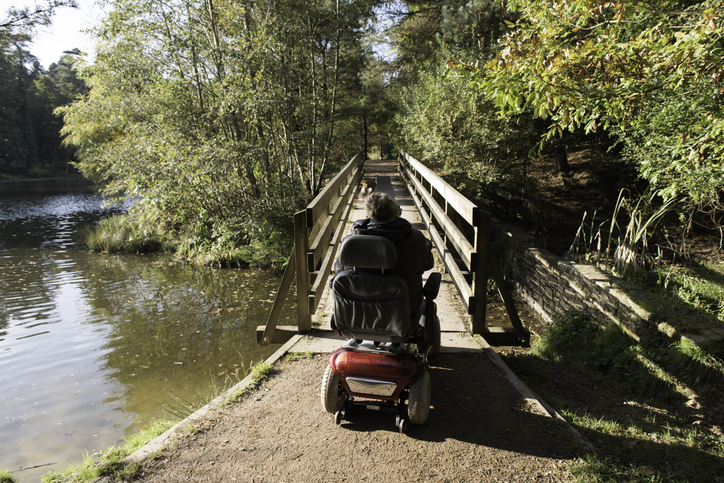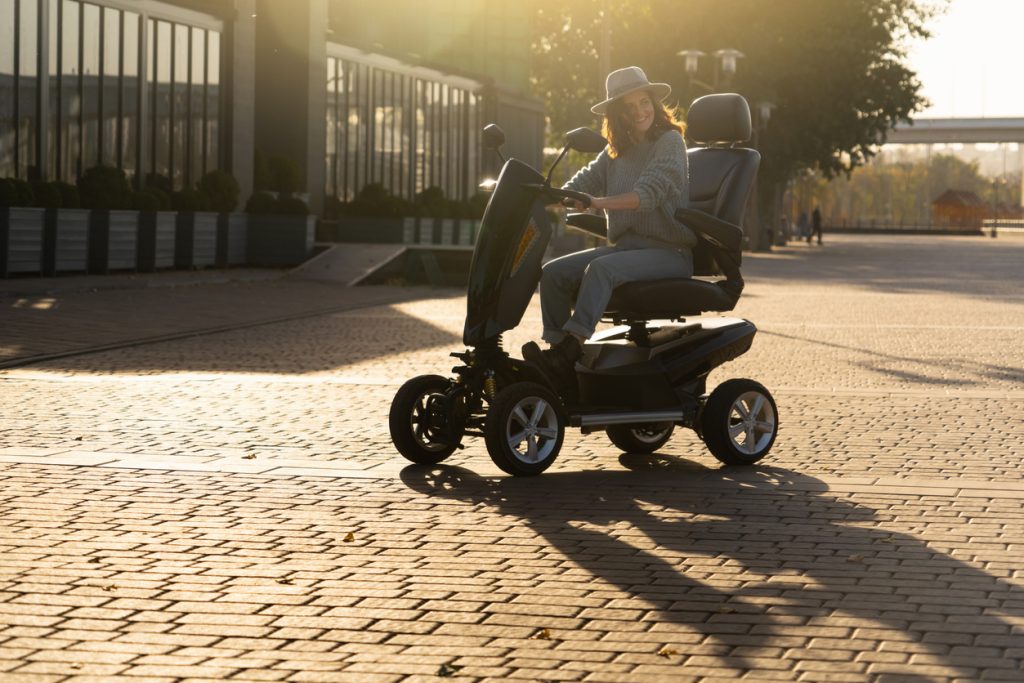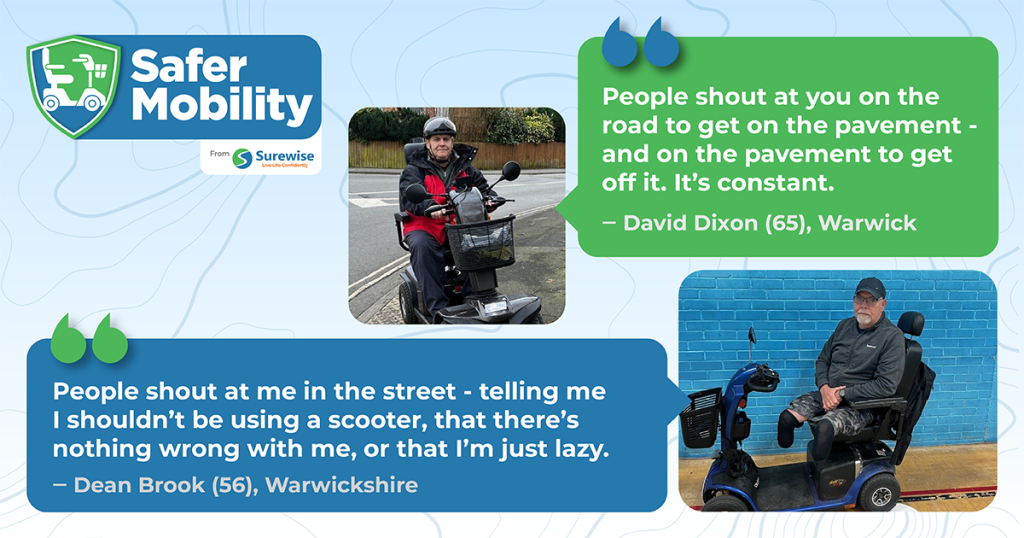If you’re a mobility scooter user, you likely already know that potholes in the road or pavement can be a huge hazard to your journey. In this guide, we’ll help you understand how to handle potholes safely, maintain your scooter, and protect yourself on the road.
For mobility scooter users, potholes are often one of the biggest causes of punctures and other damage to your scooter. A mobility scooter’s smaller wheels and lower ground clearance of scooters make them particularly vulnerable to potholes compared to other vehicles – so being aware of how to avoid them is imperative.
Short Summary
- Understand how potholes are created and the potential hazards they present to mobility scooter users.
- Plan routes, stay alert & adapt to changing road conditions to avoid potholes.
- Regularly inspect & maintain your scooter for safe operation, report any existing ones & join community efforts in improving road safety.
Potholes are one of the leading causes of mobility scooter crashes, research has shown. Find out more about our Safer Mobility Campaign and get your free copy of our safety guide & visibility sticker bundle.

How Do Potholes Form?
Potholes primarily form through a freeze-thaw process. During colder months, water seeps into cracks in the pavement, freezes, and expands, causing the asphalt to crack further.
When the ice melts, the weight of vehicles exacerbates the damage, leading to the formation of potholes. They are most common in late winter and early spring.
Additional factors that contribute to pothole formation include:
- Poor drainage
- Ageing asphalt
- Poorly repaired utility work
- Heavy traffic on weakened surfaces
Common Pothole Hazards for Mobility Scooter Users
Mobility scooters are particularly vulnerable to pothole-related accidents due to their unique design and smaller size compared to other vehicles.
The small wheels of mobility scooters can easily get caught in even shallow potholes, and scooters without adequate suspension are less able to absorb the shock from rough surfaces.
As an insurer, we’ve noticed that potholes are one of the most common causes for punctures in our mobility scooter customers – so we created this guide to try to help reduce the number of incidents while you’re out and about.
Tyre Damage or Punctures
Mobility scooter tyres are often smaller and thinner than car tyres, making them more susceptible to punctures or damage when hitting potholes.
The sharp edges of a pothole can cause the tyre to tear or deflate, which can leave the scooter inoperable, stranding the rider in potentially unsafe locations. (Make sure you’ve added puncture protection and 24/7 recovery to your insurance to avoid this happening to you!).
Even minor tyre damage can worsen over time, compromising the scooter’s safety and performance. Regularly checking and maintaining tyre pressure is vital to reduce the risk of blowouts.
Loss of Balance or Control
Additionally, one of the most common dangers of encountering a pothole on a mobility scooter is the risk of losing balance or control. The small wheels on mobility scooters are less able to glide over depressions or uneven surfaces, which can cause sudden jolts or jerks.
This abrupt movement might force them to swerve unexpectedly or worse, unseat a mobility scooter altogether – increasing the risk of accidents, particularly in busy areas or near traffic. Even a small loss of balance can be dangerous if it occurs near pedestrians, other vehicles, or kerbs.
Risk of Tipping Over, Especially at Higher Speeds
The design of many mobility scooters, particularly lightweight models, can make them prone to tipping over when encountering large potholes or uneven surfaces, especially if travelling at higher speeds.
A sudden drop or jolt from hitting a pothole can cause the scooter to tip to one side or even flip over, leading to serious injury.
This risk is heightened on inclines or when turning, as the scooter’s centre of gravity shifts, making it harder to recover from the impact of a pothole.
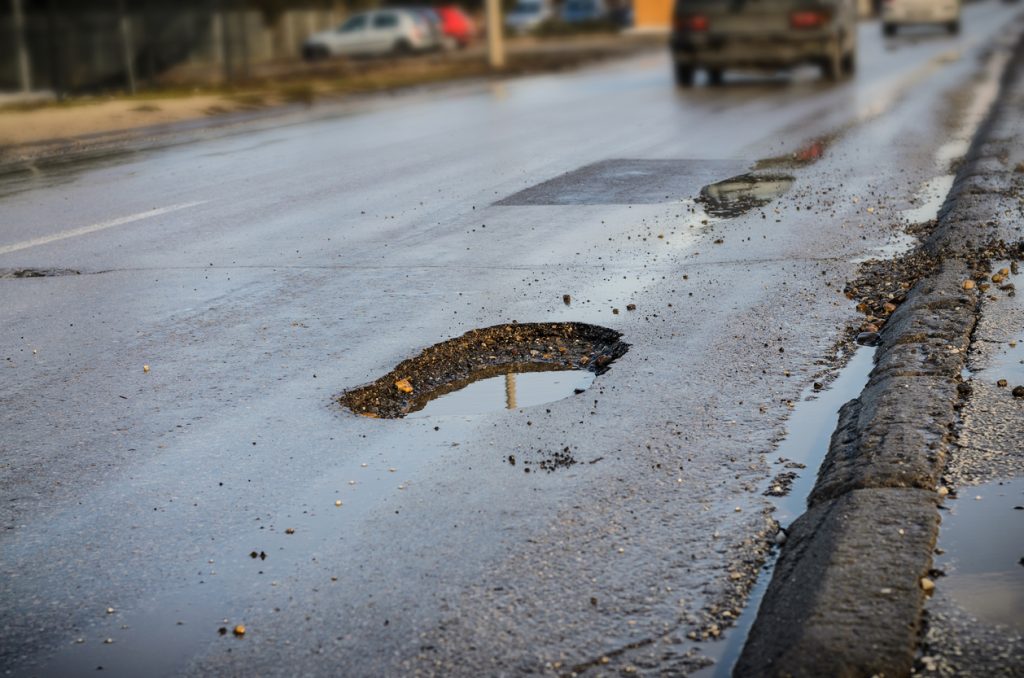
Strategies for Avoiding Potholes on Your Journey
So, we’ve covered just how much of a hazard potholes can be to a mobility scooter user. Now, let’s look at some realistic ways to avoid encountering one on your journeys.
Plan Your Routes
While you can’t always predict where potholes will appear, planning your journey to avoid busy or poorly maintained roads can help.
Where possible, stick to routes where you know the surfaces are smoother and keep an eye out for road repairs.
Stay Alert on the Road
To avoid accidents, it’s essential to stay alert while riding your scooter. This applies to avoiding potholes, but is good advice for all circumstances when using a mobility scooter!
Keep your eyes on the road ahead, and avoid distractions such as mobile phones or other electronic devices. If you fatigue easily, take breaks from driving and make sure you’re well rest before heading out.
Being awake and alert will make it easier and safer to navigate around any potholes you might encounter.
Adapt to Road Conditions
When potholes or rough terrain are unavoidable, adjusting your speed and taking alternative routes can help reduce the risk of a puncture or more serious incident.
If possible, use the pavements instead of roads with known surface issues, and avoid steep inclines or poorly lit areas where potholes might be hard to spot.
Be aware that in winter, potholes can easily be covered by leaves and other debris, so you’ll need to be extra cautious. Read our winter mobility scooter safety guide for more cold-weather specific safety tips.
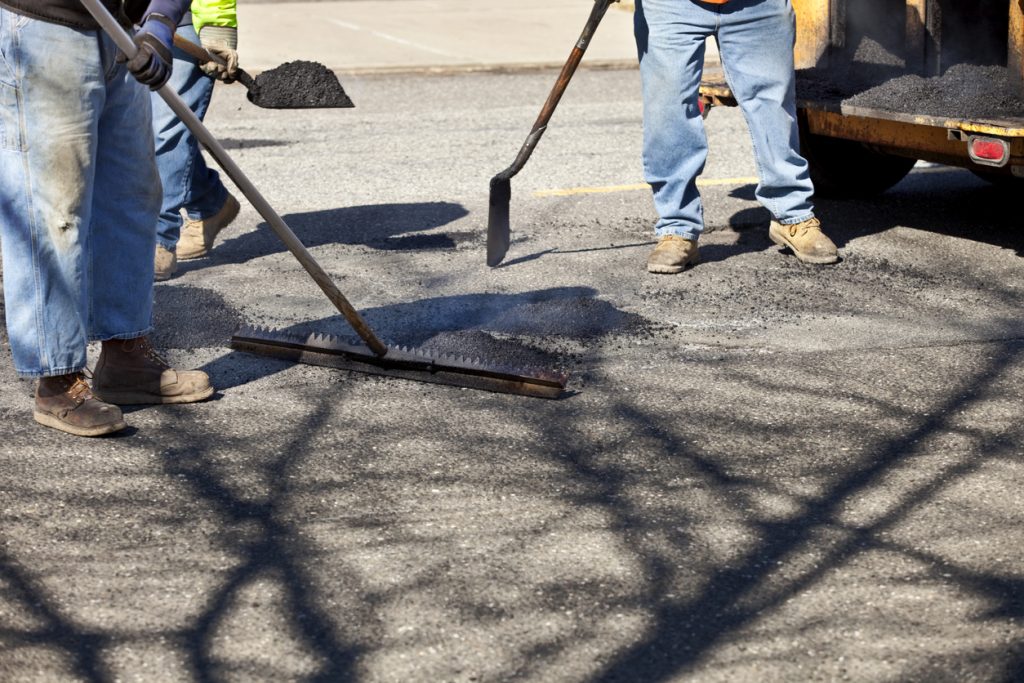
Maintaining Your Scooter for Pothole Safety
Keeping your mobility scooter in top condition will help prevent damage from potholes and ensure a safer, smoother ride. A few things you can do to ensure your scooter is in top condition include:
Regular Inspections
Schedule annual professional servicing to check for wear and tear. This includes inspecting tyres, brakes, suspension systems, and looking for rust or loose bolts.
This is a good way of identifying potential problems with your tyres from potholes, but is also a good thing to do for your scooter regardless.
Tyre Care
Maintaining the correct tyre pressure and inspecting tread regularly is essential if you want to avoid suddenly finding yourself with a flat tyre when out on your mobility scooter!
What’s more, well-maintained tyres can better withstand the shock of hitting a pothole and reduce the risk of blowouts.
Reporting Potholes
It can be easy to see a pothole but simply pass it and hope that the council repairs it at some point. However, any road user can report potholes to your local authority to help improve road safety for all.
When reporting, provide detailed information such as the exact location and size of the pothole. This may even speed up the process of the potholes being repaired!

